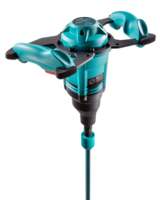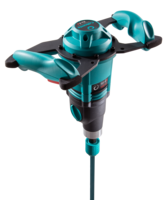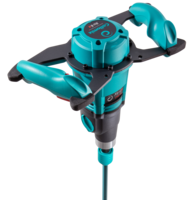
The Benefits of Mixing Properly
Mixing and Processing Self-leveling Compounds for Floors
HOW TO MIX SELF-LEVELING COMPOUND FOR FLOORS
Self-leveling floor fillers come as dry, ready-mixes in bags. Most of the time these are cement-based formulas combined with a wide range of chemical additives that give the mixture the characteristics for a proper subfloor. This dry material is then mixed with a fixed amount of water, creating a long-lasting product when mixed properly. However, self-leveling floor fillers differ from other mortars or adhesives in terms of their formulation and viscosity. For example, a flowing compound spreads across the floor almost by itself – smoothing out any unevenness and small holes. This smooth surface then makes it possible to lay a suitable covering of tiles or carpeting.
In addition, a self-leveling compound ratio contains many different materials that you may not see in other common concrete and mortar mixes, including a range of polymers that gives the material a range of unique properties to help it level floors while remaining strong under pressure.
Will the process and method used in mixing self-leveling compounds make a difference in the end result? Yes, because mixing matters. When mixing a self-leveling compound, the goal is to be as free of lumps as possible, in a word, practically perfect. The method used in mixing self-leveling compounds is important to the finished product's performance. If you're wondering how to mix self-leveling floor compound to get the best results, you'll want to use specially designed tools, including the best mixing paddle for a self-leveling compound, no matter whether you're mixing small or large batches. Choosing the right mixing tool is crucial, especially when mixing by hand with a mixer. In many cases, the material manufacturer may stipulate that the mixed compound must be left to rest awhile before it’s processed. This particular step helps plastic additives within the mixture to fully develop.
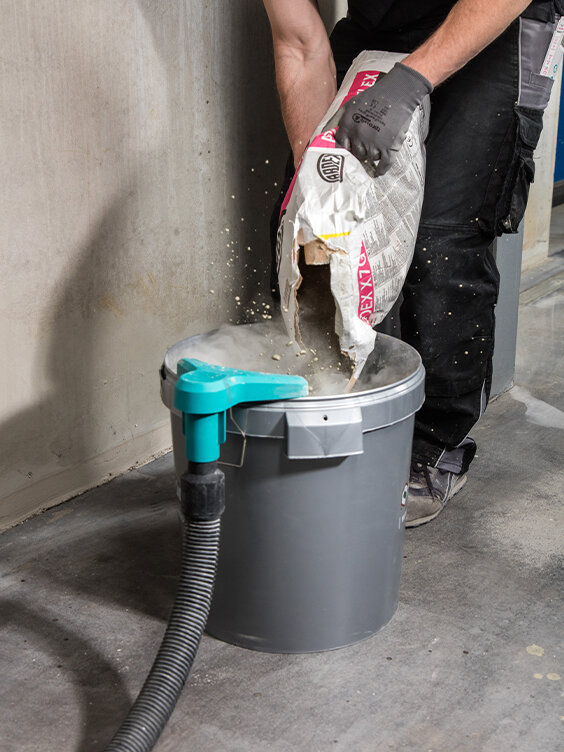
Ingredients in a Self Leveling Compound Ratio
By understanding how the different ingredients in self-leveling compounds work together, you'll be able to better understand how important it is to use proper measurement and mixing.
Cement. The first and main ingredient on our list is cement. Cement is a mineral substance that acts as a binding agent and gives the material strength when mixed with water. When combined with water, cement is activated and thus binds the other components (like sand), in the mixture. Over time, the cement solidifies into a hard mass.
Polymers. Cement on its own is fairly brittle when it's poured too thin, so the second ingredient that you'll find in self-leveling compounds are plastic additives called polymers. Polymers serve a range of purposes in the self-leveling compound ratio, allowing the cement to flow much more easily while maintaining its strength. At the same time, these polymers give the finished coating elasticity, strength and other factors important in pouring self-leveling floor compounds.
Sand. A common question is, “Can you mix sand with self-leveling compound?” You should always check with the manufacturer of the leveling compound whether this is possible with the material. Normally, the components in the ready-mix are precisely matched to each other in terms of weight. In certain cases, however, it is possible to change the properties of the filler by adding sand. For example, adding sand can increase the thickness of the layer you are applying. However, if no additional cement is added, this will affect the strength. Therefore, it is essential to clarify this issue with the material manufacturer.
Water. For good reason, floor leveling compounds are offered as ready-mixes. Individually formulated material tends to be error-prone. Adding the correct amount of water is a particularly important aspect. The water not only activates the cement in the mix, but also the polymers. By activating these materials, the entire mixture can bond well with itself and other surfaces. If too little water is added then not all the components will dissolve. This can lead to reduced adhesion. In contrast, if too much water is added, the formula will be overwatered – resulting in cracking or brittleness in the surface.
HOW TO MIX SELF LEVELING FLOOR COMPOUND
Choose your tool. To quickly and easily mix an appreciable amount of self-leveling compound, you'll want to select a paddle mixer– a hand-held motor with an ergonomic design that has a spindle and a mixing attachment at the bottom. The attachment point handles a range of paddle styles so that you can adapt to the material you're mixing. Given the relatively thin composition of self-leveling compound, you don't need a heavy motor to manage the process.The selected shape of the paddle is crucial for a fast and optimal mixing result.
As with any material, the question as to which device should be used for mixing arises. Questions like: How often will the material need to be mixed for the particular job? How much is being mixed at once? And, how quickly can the process be batched? Once these questions are answered, a decision can be made as to whether to work by hand with a hand mixer, or use an automatic mixer
For successful mixing of self-leveling compounds, it is extremely important to work with the right technique, otherwise failure is imminent. Ordinary concrete mixers cannot be used to prepare self-levelers correctly. The speeds are too low and their mixing effect is too weak. These mixtes require intense mixing so that all the components can be dissolved and a smooth flowing mix achieved.
Choose your paddle. After you've selected a paddle mixer that has high torque, is designed for the amount you need to mix, and is ergonomic, it's time to select a paddle. There is really only one right paddle for self-leveling material: the DLX double-disc paddle mixer. Alternatively, you can also achieve good results with the KR type.
The dual-fan DLX paddle is able to move larger amounts of material for faster mixing. With its two turbine discs, the DLX paddle ensures a strong material flow and prevents the lumps early on. The multiple edges promote even distribution of the ingredients, achieves a perfect mix much faster, and improves the flow of the compound.
Choose your accessories. After you've selected your mixing machine and paddle, it's important to get an appropriate-sized bucket. Your bucket should be approximately one-third larger than your maximum fill level to reduce the risk of material being thrown and wasted in the mixing process.
Dust often rises up when adding material to your bucket, which can make a dust extractor a great tool for protecting your crew's health. To get a perfect mix, which is very important in self-leveling compound mixing, a water doser like the AQiX makes it easy to get the perfect amount of water every time.
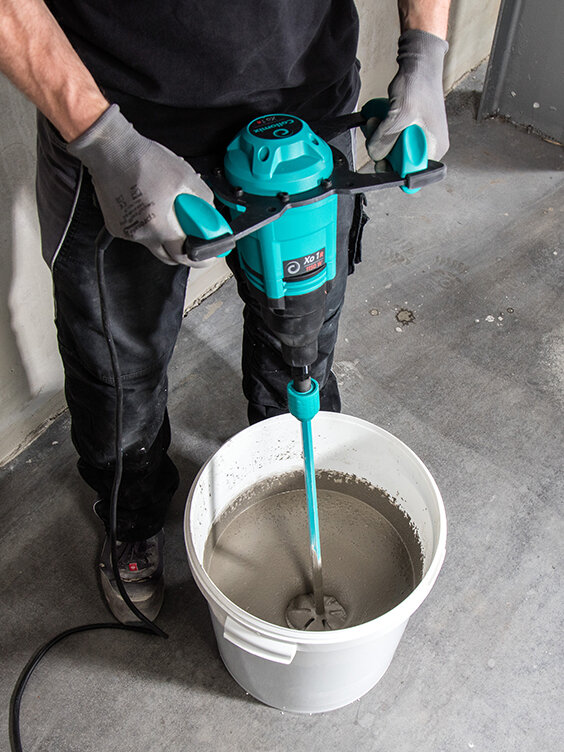
The Mixing Process
Most self-leveling compounds will come in pre-mixed bags, giving you the correct self- leveling compound ratio, requiring only the addition of water and, if needed, sand.
First: Add about 2/3 of the water to the bucket, then the powder, and start mixing. If you have a multi-speed motor, start slow to prevent splashing or poor mixing conditions, though using a lower-speed mixing motor with only one speed will still manage the process much better than a drill. Starting with water prevents powder pockets from forming in the bottom, ensuring fast and smooth mixing.
Second: After you've begun mixing, add the remaining water. Use precision when measuring water to avoid problems with your compound setting up, and don't eyeball the amount to get the best results.
Third: Continue mixing until all materials are thoroughly incorporated, the mixture should flow smoothly.
Fourth: When you think you're done mixing, look carefully at the compound. It should be neither too watery nor too crumbly, with a shiny top layer. Do not add more water once you've mixed, as this can impact the overall setup of the compound and the strength of the final material in place.
About Automatic Mixers
Automatic mixers, such as drum concrete mixers, are useful for large mixing jobs above 24 gallons of capacity. They do allow increased productivity due to the volume, speed, and hands-free operation, but you'll want to consider whether your crew will be able to move that much self-leveling compound for every cycle. Collomix offers a particularly effective machine for mixing floor fillers: the LevMix. This mixing station combines several advantages – a quantity of up to three bags of material can be mixed in one batch without leaving any residue. The special and highly effective mixing tools ensure lump-free mixing in the shortest amount of time. After the mixing process, the entire unit can be moved for transportation and the material can be distributed with minimum effort. The LevMix is the optimum solution for floor specialists in terms of quality, time saving and energy saving work.
